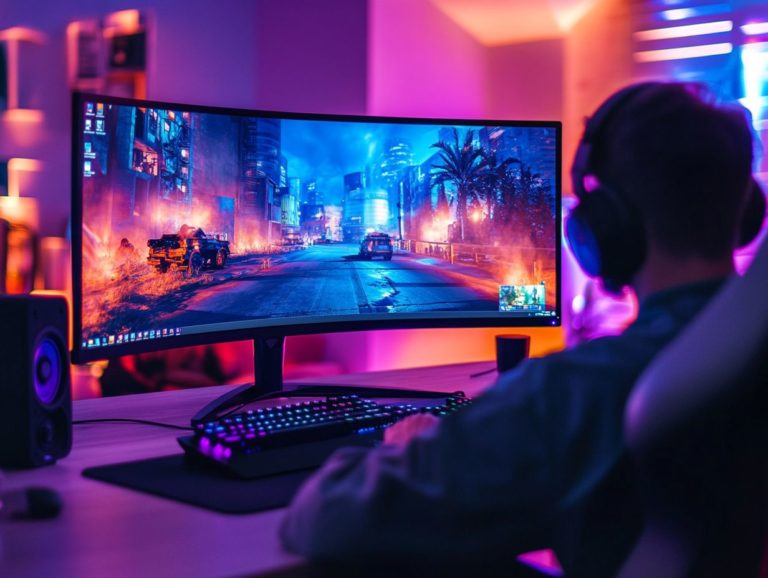what is the future of vr in gaming?
Virtual reality (VR) has evolved significantly since its early days. It has transitioned from a niche curiosity to a prominent player in the gaming world.
This exploration invites you to delve into the journey of VR technology, uncovering its current landscape, popular titles, and innovations that enhance graphics and immersive experiences.
As VR redefines game design and opens new avenues for revenue, it also encounters challenges like motion sickness and accessibility issues.
Join in the examination of VR’s future in gaming and the vast potential it holds.
Contents
- Key Takeaways:
- The Evolution of VR in Gaming
- The Current State of VR Gaming
- Advancements in VR Technology
- Improvements in Graphics and Immersion
- Potential for Haptic Feedback
- The Impact of VR on the Gaming Industry
- Changes in Game Design and Development
- Potential for New Revenue Streams
- The Future of VR in Gaming
- Challenges and Limitations
- Frequently Asked Questions
Key Takeaways:
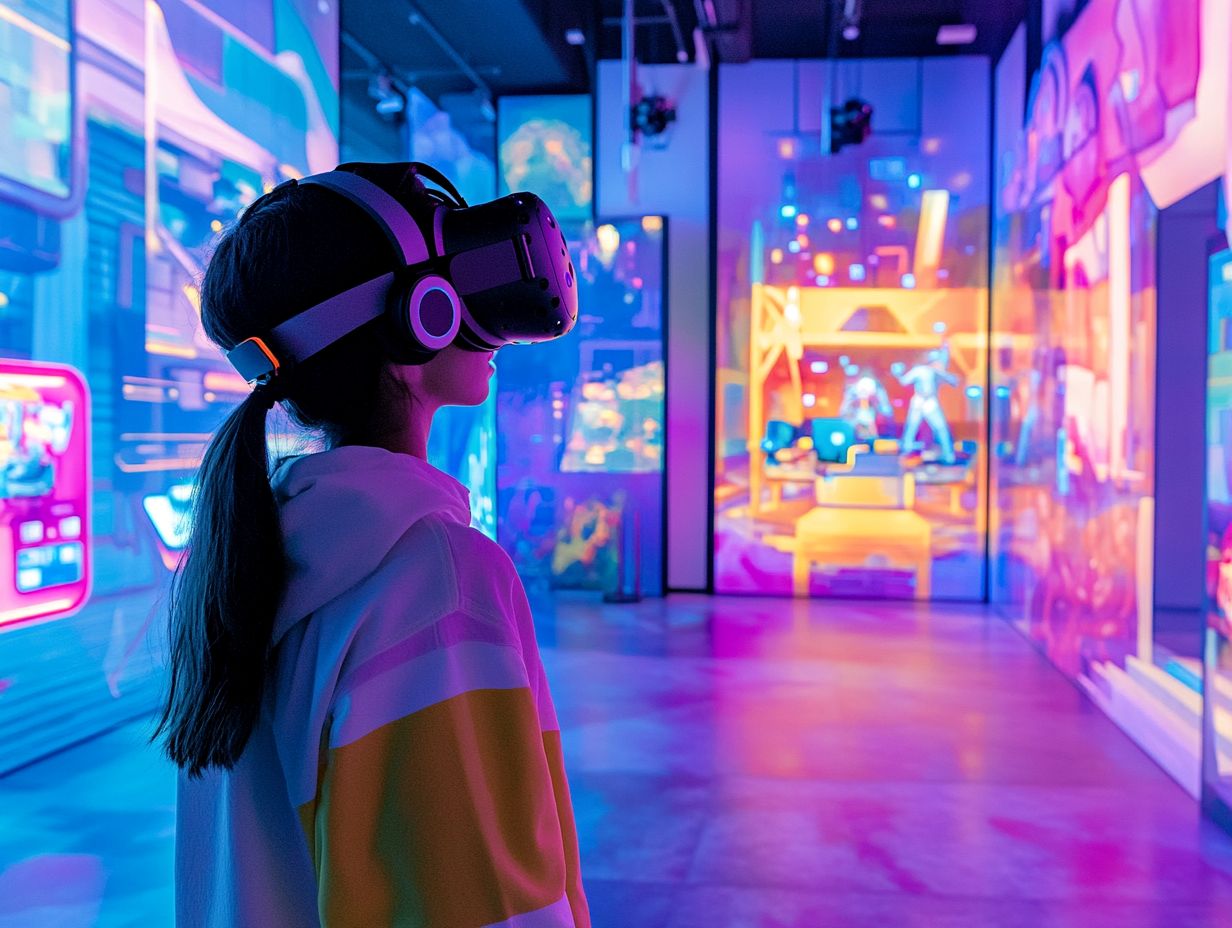
VR in gaming has evolved dramatically. It started as a novelty and now offers thrilling experiences, making it an exciting market for gamers. Advancements in VR technology have greatly improved graphics and immersion in gaming, with the potential for haptic feedback adding to the experience. The future of VR in gaming is bursting with thrilling possibilities, including changes in game design, new revenue streams, and an overall impact on the gaming industry.
The Evolution of VR in Gaming
The evolution of virtual reality (VR) in gaming has been remarkable. VR started with basic simulations. Now, it offers cutting-edge immersive experiences, especially from Silicon Valley.
This advancement seamlessly integrates sophisticated technologies like mixed reality the blending of virtual and real-world elements and the Apple Vision headsets, fundamentally reshaping the gaming landscape and enhancing user experience.
As VR technology progresses, it grabs your attention, revealing the immense potential of immersive environments and the artistry behind software development. This growth is propelled by industry trends and pioneering development companies, inviting you to explore a realm where gaming transcends mere entertainment and becomes an extraordinary journey.
From Early Attempts to Current Technology
From the early days of VR technology, like the ill-fated Virtuality arcade systems, to the state-of-the-art immersive experiences offered by headsets such as Oculus Quest 2 and Apple Vision, you’ve witnessed remarkable transformation in the gaming industry.
This evolution is punctuated by significant milestones, including the introduction of the Sega VR headset in the early ’90s, followed by the emergence of companies like HTC and Sony, which ushered VR into the mainstream with platforms like PlayStation VR.
Advancements in graphics processing, motion tracking, and user interface design have elevated realism and engagement in virtual environments. These innovations have captivated gamers and ignited breakthroughs across various sectors, highlighting VR technology’s profound impact on interactive entertainment.
The Current State of VR Gaming
The current landscape of virtual reality gaming presents an expansive marketplace, marked by increased user adoption and a diverse selection of VR devices.
These innovations have created immersive environments that truly redefine how players engage with their gaming experiences.
Popular Games and Platforms
Some of the most celebrated games in the VR technology sphere are titles like Beat Saber, Half-Life: Alyx, and VRChat, each leaving a lasting mark on the gaming community.
These games harness cutting-edge technology and provide immersive experiences that transform how you interact with virtual environments.
In Beat Saber, you ll find yourself combining rhythm and physicality, slashing through blocks to the pulse of energetic music. It s not just a game; it s a workout that keeps you moving and grooving.
Half-Life: Alyx offers a narrative-driven adventure with stunning graphics and captivating puzzles, pulling you deeper into its richly crafted world.
VRChat shines in its ability to create virtual hangout spaces. Here, you can engage, socialize, and express yourself through unique avatars, showcasing its appeal that goes well beyond traditional gaming.
Advancements in VR Technology
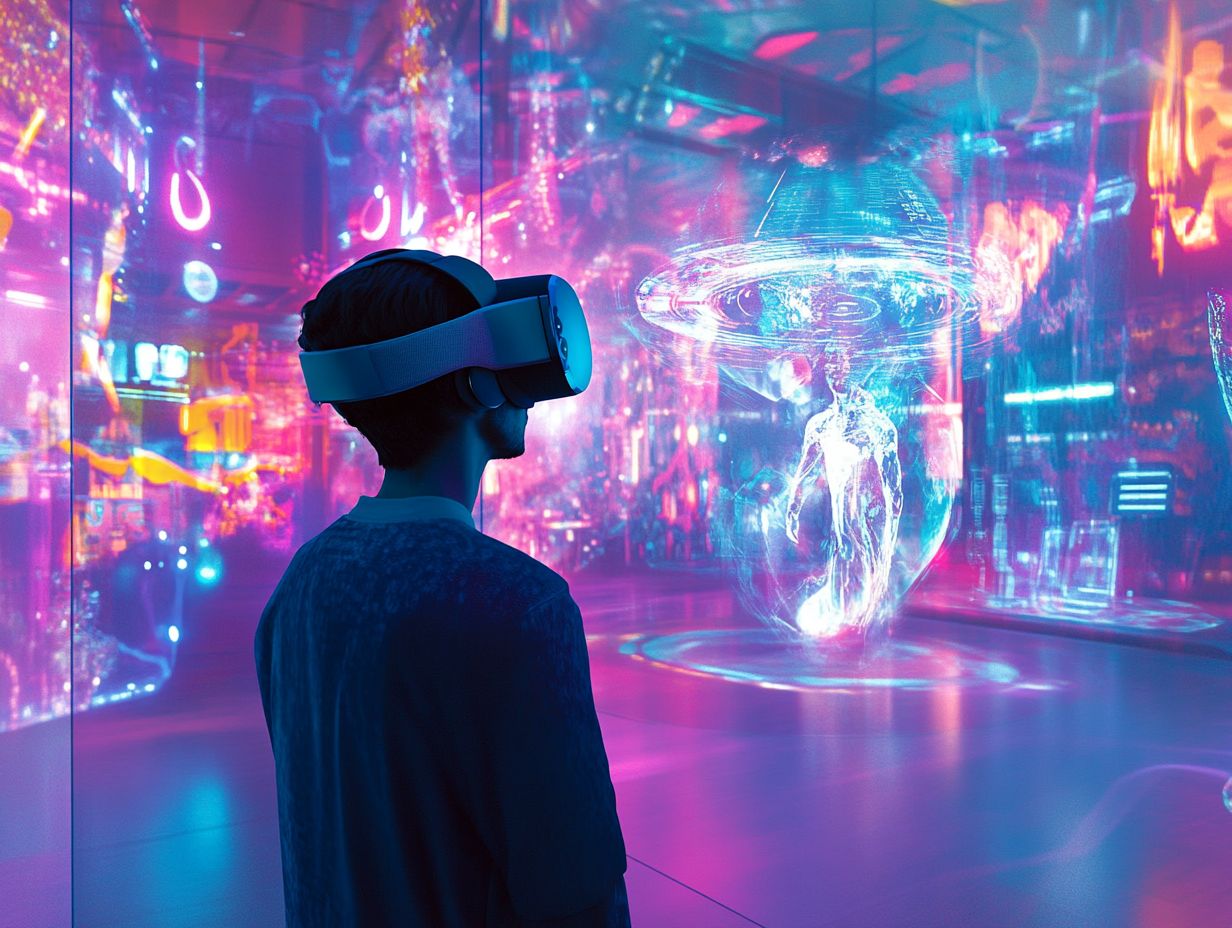
Advancements in VR technology, marked by significant hardware enhancements and innovative software developments, are providing you with unparalleled user engagement and immersive experiences that captivate players like never before.
Dive into the world of VR gaming and experience these innovations yourself today!
Improvements in Graphics and Immersion
Improvements in graphics technology have dramatically heightened immersion levels in VR gaming, transforming the experience into something truly lifelike and engaging.
With cutting-edge innovations like ray tracing and advanced rendering techniques, you can now explore virtual worlds with hyper-realistic lighting, shadows, and textures.
Technologies such as a technique that makes the area you are looking at appear sharper while saving processing power ensure that only the area where your gaze is focused is rendered in exquisite detail.
This meticulous attention to visual fidelity captivates you as a gamer and deepens your emotional connection to the storylines and characters.
Virtual reality isn t just gameplay; it s an unforgettable journey that brilliantly blurs the lines between fiction and reality.
Potential for Haptic Feedback
The potential of haptic feedback technology in VR gaming elevates immersive experiences by delivering tactile sensations that significantly enhance engagement and realism.
Imagine feeling the impact of virtual objects as you play, from the gentle brush of a breeze to the thrilling jolt of an explosion. This innovative approach fundamentally transforms how you interact with digital environments.
You ll find haptic feedback in various applications, including training simulations for medical professionals and immersive educational tools, showcasing its versatility beyond just gaming.
As technology advances, the future appears bright. With developments in wearable devices and sophisticated feedback systems, you can anticipate even more lifelike sensations, leading to unprecedented levels of immersion and emotional connection.
The Impact of VR on the Gaming Industry
The impact of VR technology on the gaming industry is revolutionary. It has transformed user experiences, reshaping how you interact with games and immersing you in captivating worlds.
This shift compels development companies to adapt swiftly to evolving consumer demands and preferences, ensuring they remain at the forefront of innovation.
Changes in Game Design and Development
Changes in game design and development have emerged as a direct result of VR technology, enabling you to create immersive experiences that truly captivate players.
This shift has revolutionized how you conceive gameplay mechanics, introducing a remarkable level of realism and interactivity into the virtual realm.
Take titles like ‘Beat Saber’ and ‘Half-Life: Alyx’; they harness the immersive environment of VR to engage players both physically and mentally, delivering gaming experiences that leave a lasting impact.
The demand for intuitive controls and natural interactions has sparked innovations in user interfaces, prompting you to rethink how players connect with narratives.
As a result, storytelling in games often incorporates spatial elements, drawing players deeper into the meticulously crafted worlds that await them.
Potential for New Revenue Streams
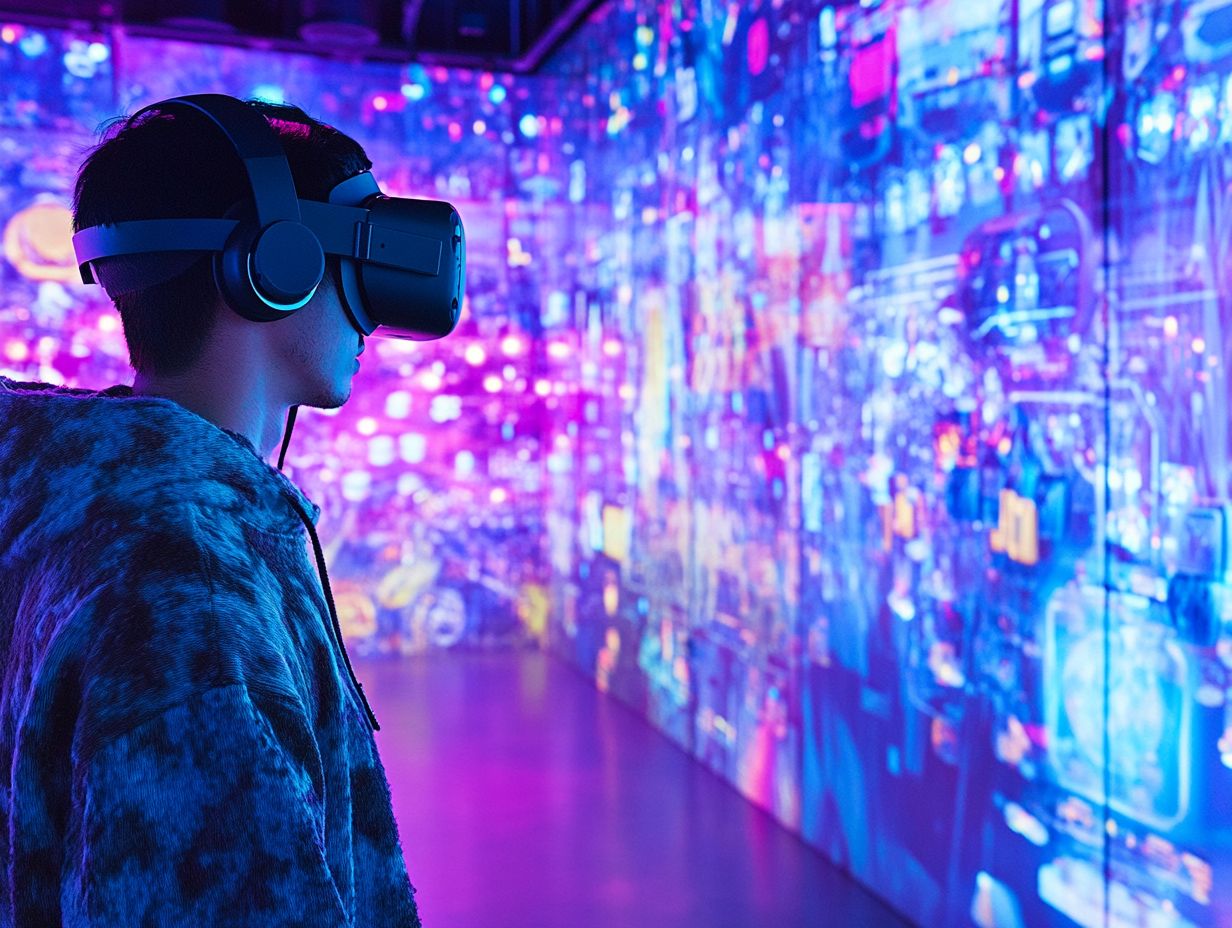
The introduction of VR technology opens the door to exciting new revenue streams in the gaming market, allowing you to capitalize on the growing user adoption and demand for unique experiences.
As the gaming landscape evolves, developers dive into innovative gameplay mechanics and immersive storytelling that only VR can offer. Companies like Oculus and PlayStation are already making significant investments in both hardware and exclusive game titles.
Trends suggest a notable shift towards social multiplayer VR games, where players can interact in shared environments. This boosts user retention and drives in-game purchases.
These evolving dynamics create a vast market bursting with monetization opportunities, from virtual merchandise to subscription models, enabling you to diversify your revenue portfolio in ways you might not have imagined.
The Future of VR in Gaming
The future of VR in gaming is undeniably promising, with continuous technological advancements, growing user adoption, and experiences so immersive they could transform interactive entertainment.
Prepare to embrace a new reality where gaming transcends traditional boundaries, inviting you into worlds previously confined to imagination.
Stay tuned for the latest developments in VR technology and immerse yourself in the excitement!
Predictions and Possibilities
Predictions for the future of VR technology in gaming suggest a remarkable shift toward more integrated environments that tap into emerging market trends. You will likely see seamless experiences that align with user expectations.
As technology continues to evolve, an increase in functionalities mixing augmented reality and traditional VR setups is on the horizon. This will allow you to navigate both virtual and real-world spaces with ease.
The rise of cloud gaming services, which involve playing games streamed over the internet instead of from a console or PC, is set to enhance accessibility. This enables you to enjoy high-fidelity virtual experiences without the burden of costly hardware.
Increased social interaction features will be pivotal, offering opportunities to connect with others in large virtual spaces. These advancements will redefine how people engage in gaming.
Advancements in motion tracking and touch feedback will introduce new layers of immersion that could redefine gameplay. This evolution makes VR an essential component of the gaming landscape.
Challenges and Limitations
Despite impressive strides in VR technology, several challenges and limitations persist. These obstacles can hinder widespread user adoption.
They significantly affect the overall user experience, making it crucial to address them.
Addressing Motion Sickness and Accessibility
Addressing motion sickness and accessibility issues is critical in VR technology. This is especially important as creators strive to craft experiences appealing to a wider audience.
To overcome these challenges, strategies have emerged, such as adjustable comfort settings. These allow you to customize your gaming experience based on your sensitivity levels.
Some developers have cleverly integrated features like a reduced field of view during rapid movements. Others offer smooth locomotion options that gently ease you into virtual environments.
Well-designed educational tutorials provide guidance on interacting with VR worlds. This ensures a seamless transition into immersive experiences.
Moreover, accessibility remains paramount. Enhancements like voice commands and customizable controls enable gamers of all physical abilities to fully engage in the virtual realm.
The Exciting Potential of VR in Gaming
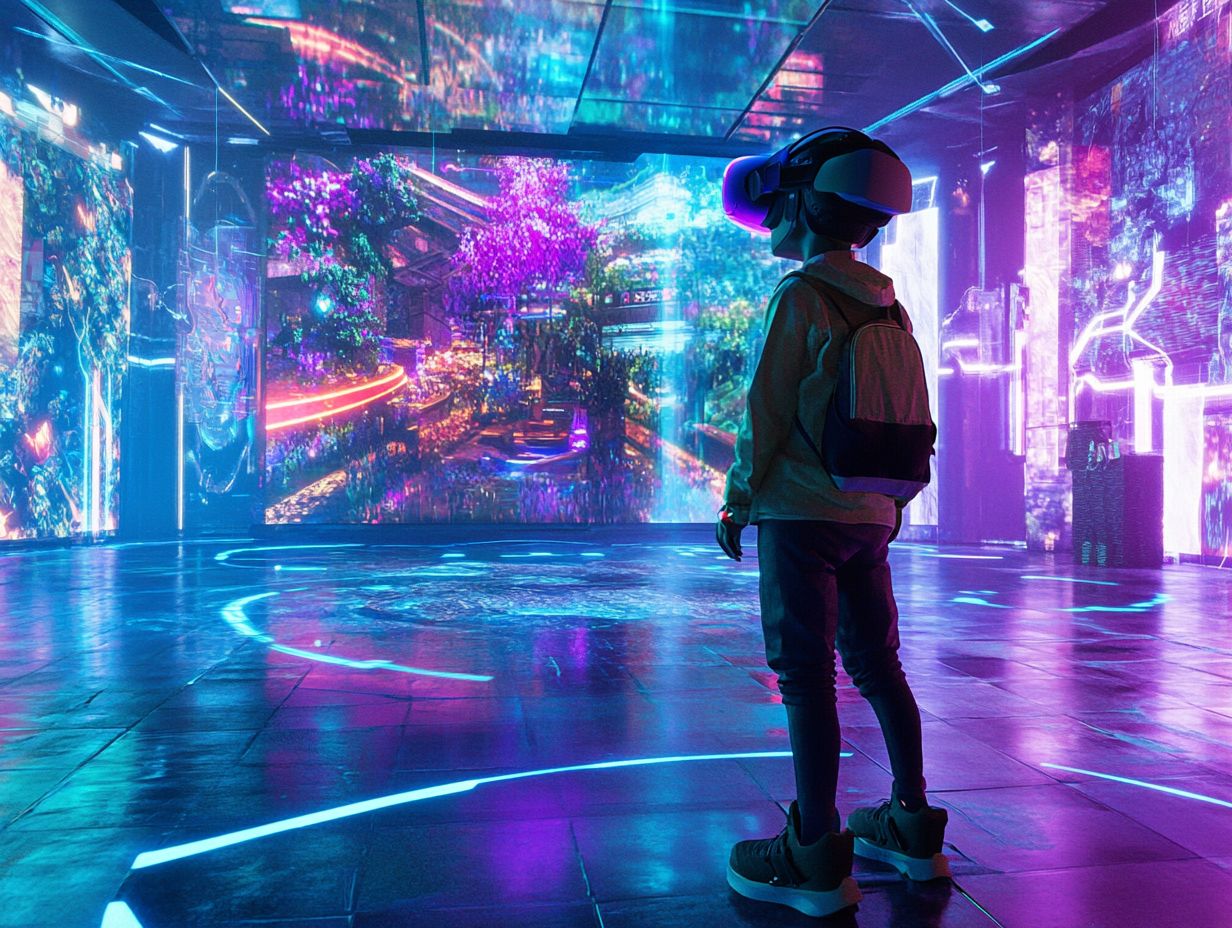
The thrilling potential of VR technology in gaming is ready to amaze you! Groundbreaking innovations promise to deliver immersive experiences once deemed impossible.
With the rise of touch feedback, advanced motion tracking, and AI-driven narratives, expect a dramatic evolution in the gaming landscape. These technologies not only amplify realism but also deepen your engagement.
You can look forward to creative game concepts inviting you to embark on adventures that adapt and evolve based on your choices. This dynamic interaction opens the door to fresh social experiences and storytelling methods.
Frequently Asked Questions
What is the future of VR in gaming?
The future of VR in gaming is bright and promising! As technology advances and more game developers embrace VR, expect to see immersive, realistic, and interactive gaming experiences.
How will VR change the gaming industry?
VR has the potential to revolutionize the gaming industry completely. It will enhance the overall gaming experience and create more realistic environments.
What types of games will be best suited for VR?
VR is well-suited for a variety of genres, such as first-person shooters, horror games, and open-world exploration games. However, as technology improves, expect VR to be used in all types of games.
What are some challenges that VR gaming will face in the future?
One major challenge for VR gaming will be developing hardware and software that support high-quality, realistic experiences. Another challenge is making VR technology more affordable and accessible.
Will VR completely replace traditional gaming?
It’s unlikely that VR will completely replace traditional gaming. While VR offers a more immersive experience, traditional gaming still has its strengths and appeal.
However, we can expect VR to become a more popular and widely-used form of gaming in the future. Explore VR gaming further and join a community for updates!
How will VR impact the way we play games?
VR will change the way we play games by allowing us to physically interact with the game world. This will create a more engaging and realistic experience for players.
It will also enhance social and multiplayer aspects of gaming. New possibilities for game design and storytelling will emerge, making gaming even more exciting!

